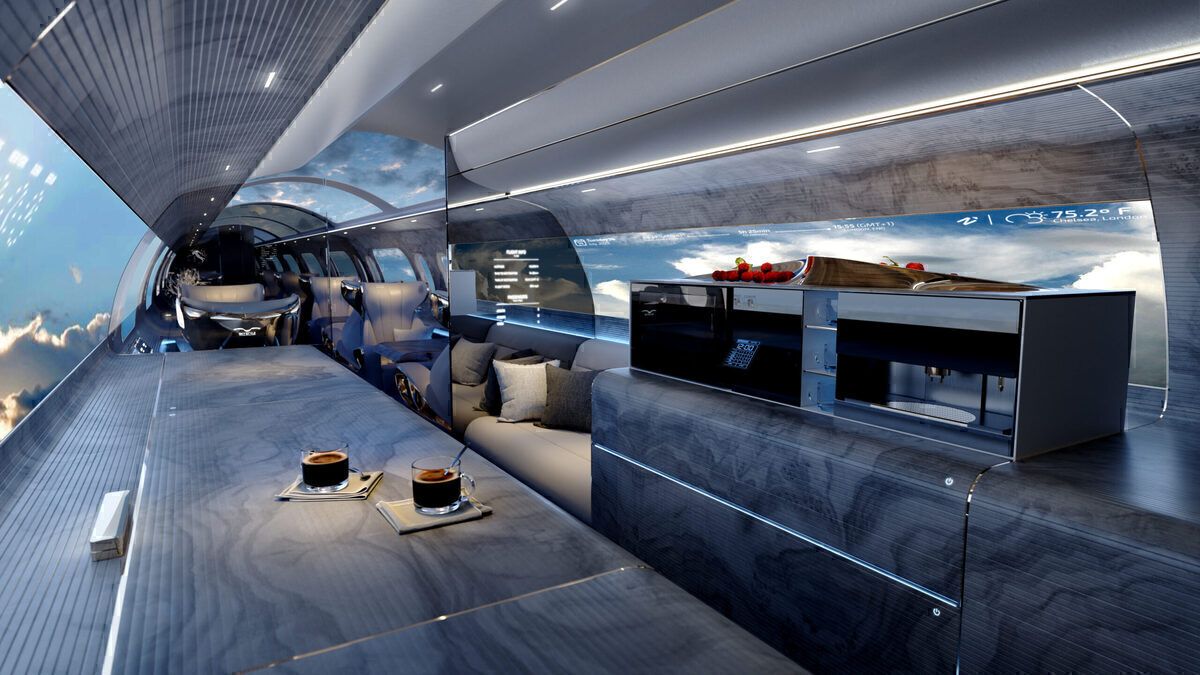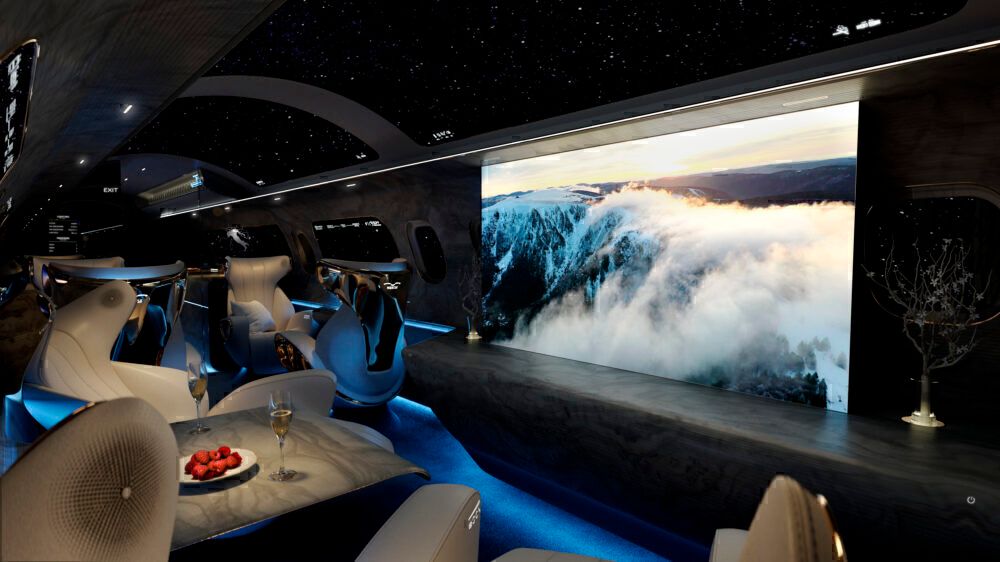Rosen Aviation was founded almost 40 years ago and specializes in premium cabin electronics. Notable milestones include industry-first remote electronics, 4K displays, and first-class center suite virtual windows. With these innovations, aircraft cabins could be revolutionized by the time this decade is over. Simple Flying had the opportunity to speak with Rosen SVP Strategy, Lee Clark, and VP Product Engineering, Darrell Finneman, about what to expect with these initiatives.
Technological advances
Rosen’s Maverick Project has garnered significant attention as of late and has been nominated for a 2021 Yacht & Aviation Award. The Oregon-based outfit feels that the ever-changing technological landscape provides an opportunity for creativity. With the concept, it is looking at the latest sensor and display technologies to create seamless control and high-quality cabin experiences. It seeks to provide a personalized environment that caters to users individually. The controls are not on show until passengers need them and the interfaces provide a truly modern experience.
Much of the technology currently being developed in upcoming smart cars will be found in aircraft cabins in the near future. Rosen shares that contextual Augmented Reality is the next evolution of AR where displayed information adapts based on all the variables to deliver the most relevant experience.
Amid the changes in the market due to the pandemic, holographic control has gone from a gizmo that elevates technology credibility to an essential health function that eliminates cross-contamination. Similarly, holograms and projection can be utilized to create a much more immersive environment for passengers, from entertainment to cabin function to flight information.
All about the views
One particular aspect that Rosen excited about with its cabin projects is its implementation of OLED displays. The screens have the potential to transform the aircraft cabin, providing unmatched image quality and greatly reduced weight, space, and power consumption.
It’s not only information and entertainment that can be displayed with these displays. Rosen sees value in using them to replace windows. However, the sights will not necessarily be missing with this bold move.
“Of the many advantages offered by OLEDs, two main highlights that open up endless opportunities are transparency and flexibility. With these new features, virtual windows and skylights are made possible in a number of different form factors, whether it be a flexible display tied to outside cameras, or a transparent display providing key flight information juxtaposed to traditional windows,” Rosen’s executives told Simple Flying.
“The other exciting aspect of virtual windows and skylights is the inclusion of augmented reality. Think about the star-tracker app that is readily available for your iPhone, and now imagine that same level of function on a 55” virtual window at 30,000 feet, describing places of interest beneath you and detailed, 3D flight information. It really takes the moving map concept to an entirely new category.”
Plenty of potential
Overall, Rosen feels that these technologies are integral in bridging any gaps within the growing realm of the Internet of Things (IoT). There is plenty of potential with these systems. The firm’s business goals strategically include aircraft ranging from small business jets to 777s and everything in between. So, these processes will combine well with other factors amid the technological renaissance such as electric propulsion, supersonic, and EVTOL/UAMV aircraft.
With all of the challenges amid the pandemic, Rosen shares that The Maverick Project was a light at the end of a tunnel for the company. Its vision is already in development, and it is ready to take the vision from concept to tangible output.
“Our design partners, KiP Creating and Sky-Style, helped bring our contemporary vision closer to reality by creating an immersive, compelling 3D rendering. This allowed customers to visually comprehend the future, and all the exciting developments within it,” Rosen shares.
“Our plans going forward are to continue development of the many technologies demonstrated in The Maverick cabin. That is what made Maverick so exciting, it was not merely CGI smoke and mirrors, but represented actual Rosen development projects. Seeing the video is one thing, getting to see and feel working proof-of-concepts takes the experience to a whole new level.”
Making the most out of opportunities
Rosen expresses that a key reason aircraft cabins lag behind smart homes and cars is due to the requirement of significant investment to get new applications certified. Conventional wisdom among OEMs and suppliers says this invites a plethora of risks into adopting new technology. However, the company challenges this notion. It argues that rather than risk, it is in every way an opportunity to separate from the competition.
The firm emphasizes that business and commercial aviation are multi-billion dollar industries. So, there is little excuse to justify standard definition displays and bulky mechanical switches.
The current focus of Rosen Aviation is to intensify what it has already started and to always be one step ahead in identifying and developing cutting-edge technology. Altogether, it wants to change the entire passenger experience.
2021 has kicked off to a great start for Rosen. The group has been selected by Aerion Supersonic to develop the AS2 cabin management and technology system. This move means that the development of the jet is gathering pace ahead of the commencement of manufacturing, which is due to start in 2023. The two businesses share many core values, especially when it comes to technology. Therefore, their joint vision will ultimately pay off after the highly-anticipated plane enters the market.
What are your thoughts about Rosen Aviation’s innovative projects within the aircraft cabin? How do you feel about the implementation of virtual windows on board the plane? Let us know what you think of the prospects of the systems in the comment section.



